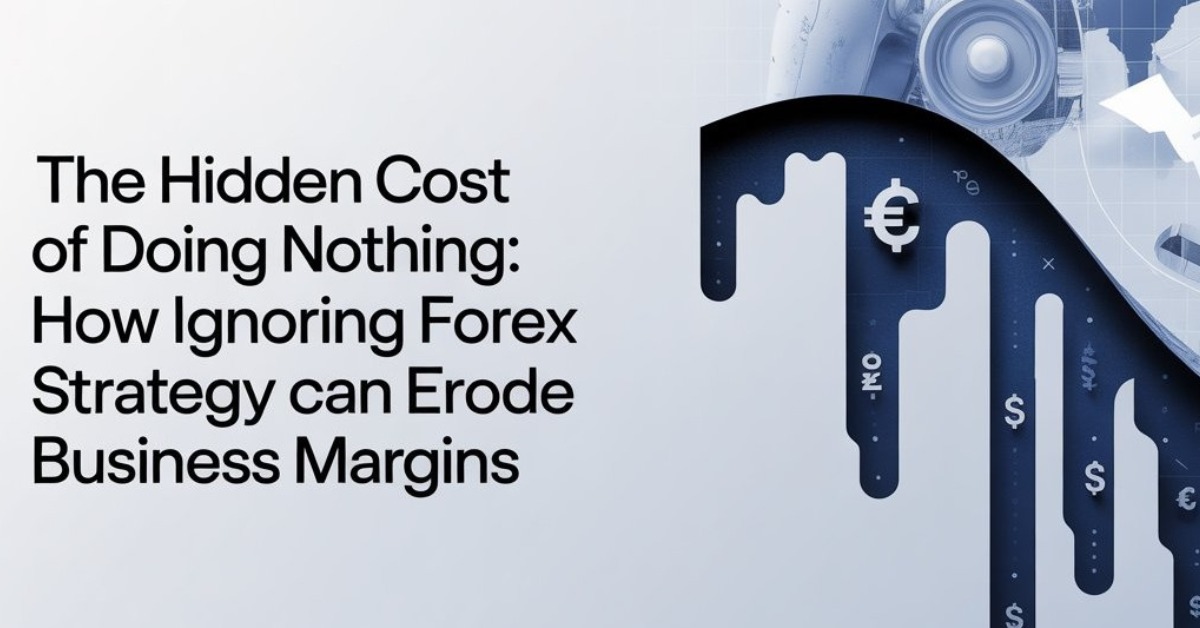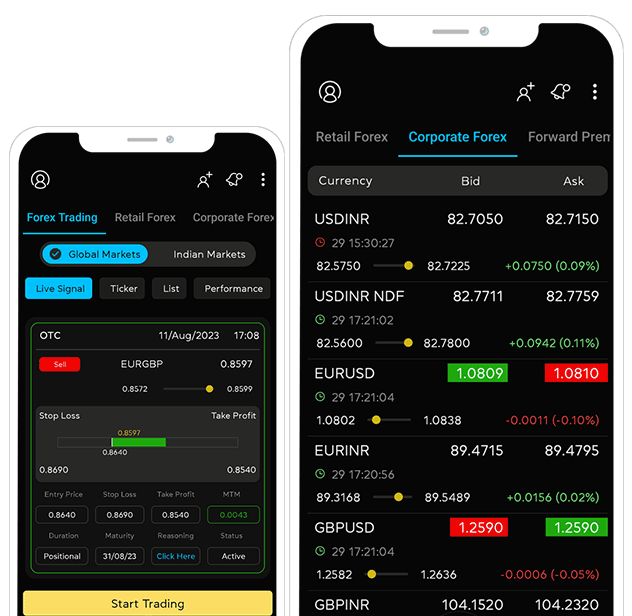Is Your Business Prepared for the Next Big Currency Swing?
Introduction
Currency fluctuations can be a significant source of risk for businesses, especially those involved in international trade. The recent global events, such as tariffs, geopolitical tensions, and economic policies, have triggered sharp swings in currency values, creating potential havoc for companies that are unprepared. Whether it’s a sudden devaluation or an unexpected currency appreciation, unhedged exposures can disrupt pricing, contracts, and profitability in an instant. Is your business ready for the next big currency swing? In this blog, we’ll explore how businesses can ensure they are prepared for any volatility ahead.
Recent Global Events That Triggered Sharp Currency Movements
In recent years, global events have caused significant volatility in currency markets. Here are some examples:
Impact of Iran-Israel Conflict
The tensions between Iran and Israel have escalated, with significant geopolitical ramifications that have led to currency volatility. As the conflict intensifies, oil prices have surged, causing sharp fluctuations in currencies tied to oil exports, such as the Russian Ruble and Saudi Riyal. Companies with exposure to these regions face increased risks due to the instability. Unhedged positions in these currencies can lead to higher costs or lost revenues. It highlights the importance of having a dynamic forex risk management policy to protect against the impact of such geopolitical events.
US-China Trade Tariffs
The trade war between the US and China sent shockwaves through the forex markets. When the US imposed tariffs on Chinese goods, the Chinese Yuan (CNY) depreciated sharply. For businesses dealing in Chinese imports or exports, this sudden devaluation meant that their costs or revenue could change dramatically overnight. A company that had not hedged its yuan exposure faced immediate profitability issues as their purchasing power in China decreased, or their sales revenue was worth less in their home currency.
India-Pakistan Conflict
The tensions between India and Pakistan have further complicated currency movements, especially concerning the Indian Rupee (INR). Geopolitical instability can affect investor sentiment, influencing the value of currencies tied to these nations, and creating potential risks for businesses in those markets.
Russia-Ukraine Ongoing War
The war in Ukraine has led to drastic economic shifts, including sanctions against Russia and disruptions to energy supplies. This geopolitical event has impacted currency values, particularly in Eastern Europe, and has also contributed to inflationary pressures that affect global trade and foreign exchange rates. Companies dealing with these regions must be aware of the ongoing risks of currency volatility.
Geopolitical Tensions and Crises
Tensions in the Middle East or sudden regime changes often lead to currency volatility, especially in emerging market currencies. The 2020 tensions between the US and Iran led to an immediate spike in oil prices, which impacted the value of currencies tied to commodity exports, like the Russian Ruble and the Saudi Riyal. These swings significantly impacted companies operating in these regions or reliant on oil imports.The Role of Stress Testing and Scenario Planning in Assessing FX Preparedness
Stress testing and scenario planning are the most effective ways to prepare for currency swings. These techniques help businesses understand the potential impact of currency fluctuations on their operations and financial health.
 Stress Testing involves simulating extreme, yet plausible, currency movements and assessing how these scenarios could affect your business. For example, businesses could test how a 10% euro devaluation would affect their profitability, or how a sudden rise in the US dollar could impact the cost of imports. By stress testing, businesses can better understand their vulnerabilities and decide on appropriate hedging or risk management strategies.
Stress Testing involves simulating extreme, yet plausible, currency movements and assessing how these scenarios could affect your business. For example, businesses could test how a 10% euro devaluation would affect their profitability, or how a sudden rise in the US dollar could impact the cost of imports. By stress testing, businesses can better understand their vulnerabilities and decide on appropriate hedging or risk management strategies.
The question here is: How can businesses safeguard against such drastic currency moves within a single business trade cycle (typically lasting 5 months)? Effective forex risk management tools, including forward contracts and options, can mitigate risks by locking in exchange rates before significant currency fluctuations occur.
Scenario Planning takes stress testing a step further by considering a range of possible future events. Rather than focusing on a single, worst-case scenario, scenario planning prepares businesses for multiple potential outcomes—whether it's a sharp currency devaluation, a minor fluctuation, or a complete collapse in a currency’s value. This approach allows businesses to devise strategies for each outcome, ensuring they can react quickly and appropriately no matter the scenario.

By incorporating stress testing and scenario planning into their forex risk management framework, businesses can better anticipate potential risks and take proactive steps to mitigate them before they happen.
Conclusion
The global landscape is rife with unpredictability, and businesses that rely on international trade are always at risk from the next big currency swing. Whether triggered by tariffs, geopolitical tensions, or unforeseen global events, currency volatility can disrupt your business overnight if you aren’t prepared.
To safeguard against these risks, it’s crucial for businesses to:
- Recognize the impact of unhedged exposures on pricing, contracts, and profitability.
- Implement stress testing and scenario planning to assess FX preparedness.
- Establish a dynamic forex risk management policy that is continuously adjusted to evolving market conditions.
Being prepared for the next big currency swing isn’t just about mitigating risk—it’s about positioning your business to thrive in an uncertain global economy.
Frequently Asked Questions (FAQs)
Q1: What are some simple steps to start hedging currency risk?
Start by identifying the currencies you are exposed to, then consult a forex expert sto explore hedging instruments like forward contracts or options that can lock in exchange rates for your transactions.
Q2: How often should I review my forex risk management policy?
Regularly monitor your exposure and adjust your hedging strategy at least quarterly, or more frequently if there are significant changes in your business environment or market conditions.
Q3: What is the best way to manage foreign currency exposure in volatile markets?
In volatile markets, it’s important to implement both hedging strategies and flexible cash flow management. Consider using options to protect against adverse movements while keeping some flexibility to benefit from favourable shifts.
Q4: How does scenario planning help in currency risk management?
Scenario planning helps you prepare for different currency outcomes by forecasting how various market conditions would affect your business. This allows you to implement pre-emptive strategies, rather than reactively adjusting after a currency move.
Q5: What role does stress testing play in preparing for currency swings?
Stress testing simulates extreme market conditions to assess how they could impact your business. By identifying vulnerabilities early, businesses can adjust their forex strategies to better manage risks.












